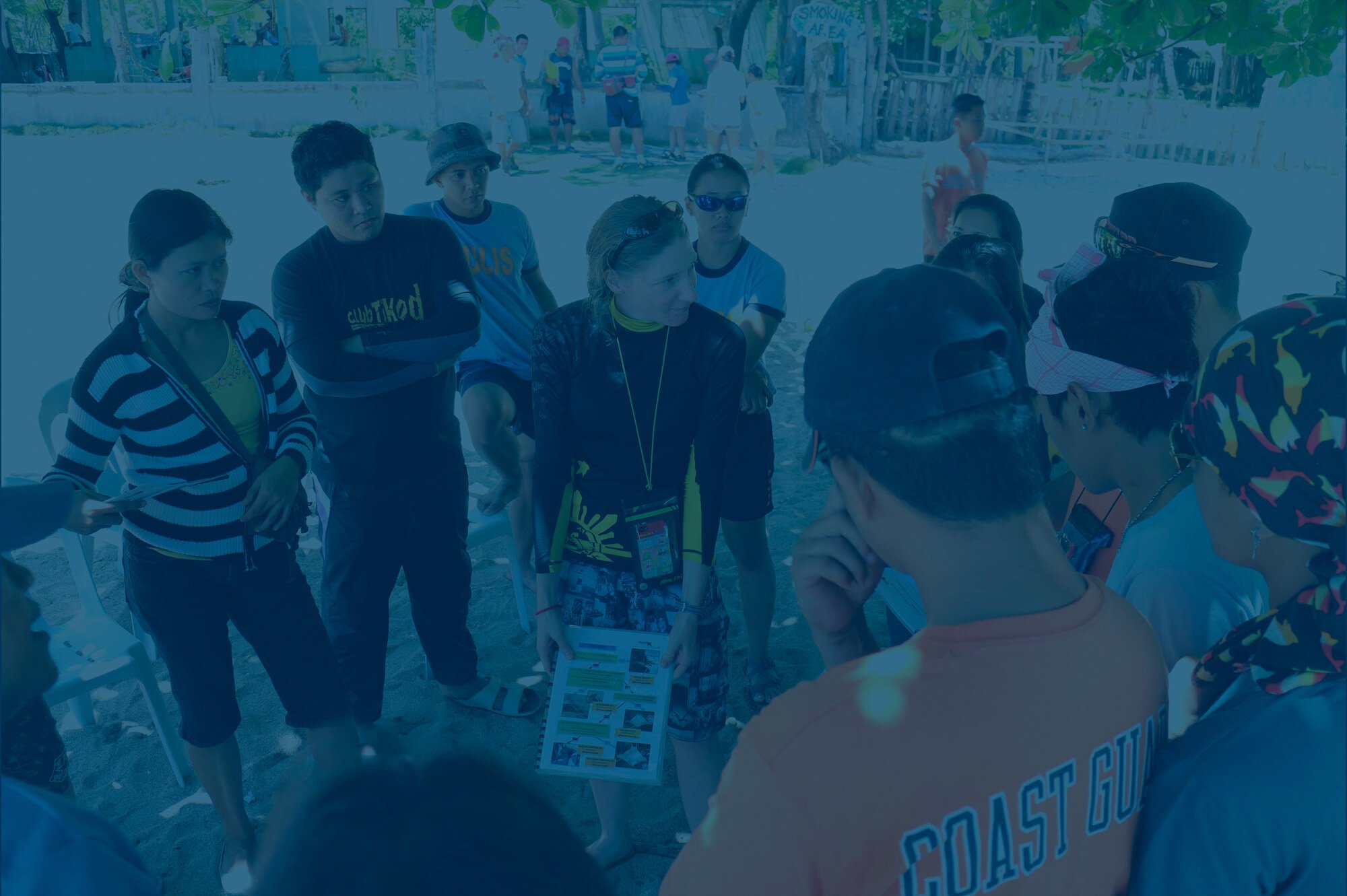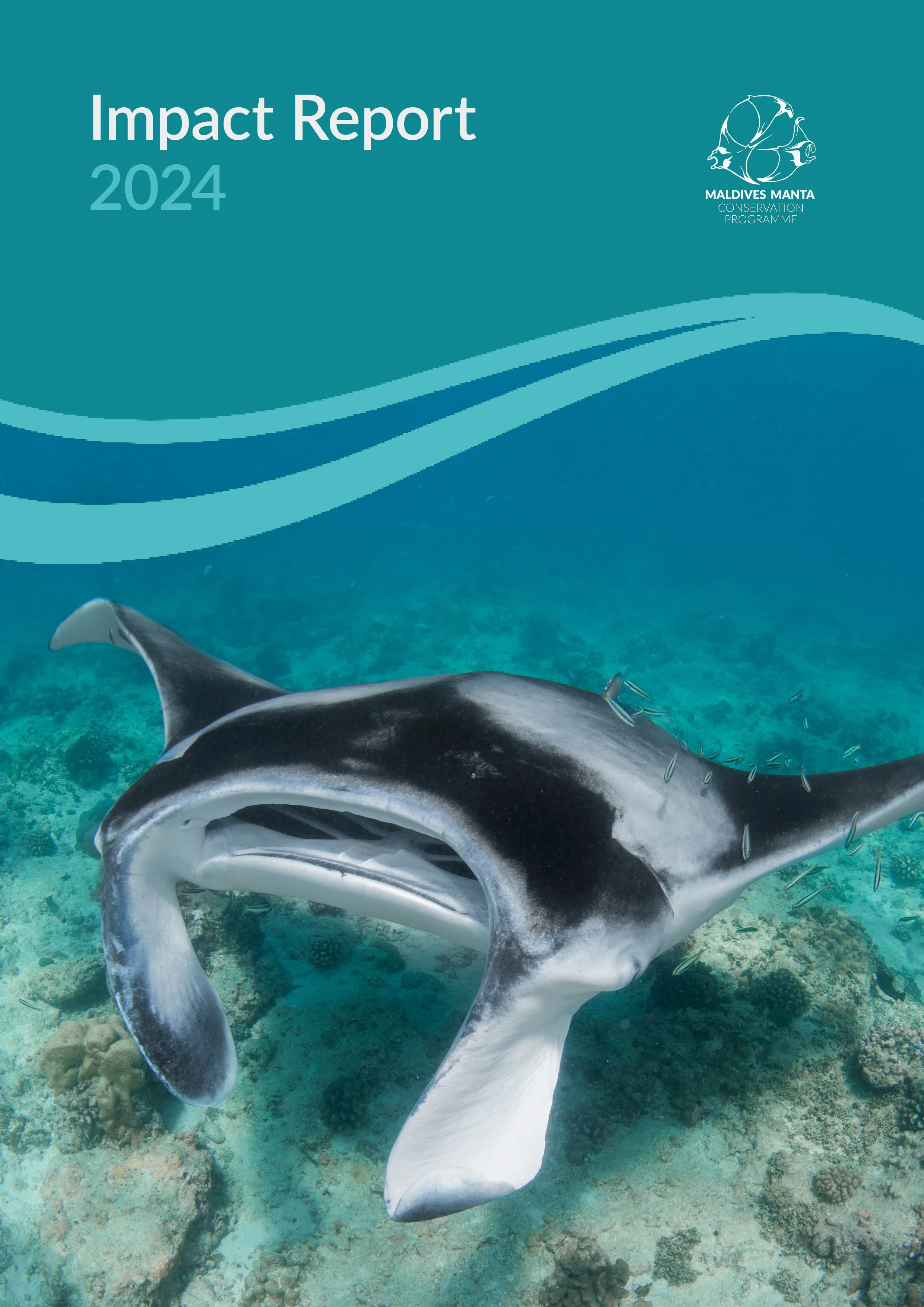

OUR ACHIEVEMENTS THROUGH POLICY & PROTECTION
Contributed towards the Regulations for the Protection of Natural or Indigenous Wildlife 6th amendment in the Maldives.
In 2023, the Maldives Manta Conservation Programme team provided details on the best protocols for safeguarding the ecology of manta rays.
Submitted multiple proposals for Important Shark and Ray Areas (ISRA) in the Western Indian Ocean.
The Maldives Manta Conservation Programme team submitted a total of 43 proposals, of which 26 sites were approved as ISRA. ISRA’s mission is the enhanced conservation of all shark, ray, and chimaera species through the implementation of a systematic place-based approach, supported by the identification of ISRA throughout these species’ ranges.
Collaborated on the designation of six ecologically significant sites in Laamu Atoll, Maldives as marine protected areas.
A collaborative research effort between the Manta Trust, Maldives Manta Conservation Programme, Maldives Underwater Initiative by Six Senses Laamu, Blue Marine Foundation, and Olive Ridley Project contributed to the designation of six marine protected areas in Laamu in 2021. One of the sites (L. Maabaidhoo Koaru Area) encompasses an important manta ray cleaning station.
Contributed data to the designation of two UNESCO World Biosphere Reserves in the Maldives.
Fuvahmulah Atoll and Addu Atoll were added to UNESCO's list of World Biosphere Reserves, with which data was contributed by the Maldives Manta Conservation Programme. Fuvahmulah Atoll is the only site in the Maldives that regularly gets visited by oceanic manta rays (Mobula birostris).
Joined forces with several groups to secure international protective legislation for mobulid rays.
Our work with several collaborating groups has resulted in the successful adoption of all mobulid species under the Convention on Migratory Species (CMS) Appendix I & II.
Spear-headed the addition of all ray species, including manta and devil rays, to the Maldivian National Protected Species List.
In 2014, the Maldives Manta Conservation Programme contributed critical data to ensure that all ray species were officially protected in the Maldives.
Helped create & implement a management plan for Hanifaru Bay Marine Protected Area in the Maldives.
Following the declaration of Hanifaru Bay as a Marine Protected Area (MPA) in 2009, the Maldives Manta Conservation Programme assisted the Ministry of Environment in the creation of a management plan. The plan’s purpose was to sustainably control tourism and minimise the impact of visitors on the reef mantas that aggregate in the MPA to feed. This was approved by the central government in 2011 and came into full effect in 2012.
Contributed data to the designation of a UNESCO World Biosphere Reserve in the Maldives.
Drove the designation of Baa Atoll as a UNESCO World Biosphere Reserve (2011).
Contributed critical data and expertise for the re-assessment to ‘Vulnerable’ status of both species of manta ray on the IUCN Red List of Threatened Species in 2011.
Following this re-assessment, our collaborative efforts with researchers and other NGOs have seen all mobulid species granted legally binding international protection in the trade of products sourced from their body parts, under Appendix II of CITES (Convention on International Trade in Endangered Species). Following this, we contributed critical data and expertise for the re-assessment of Mobula birostris to ‘Endangered’ status with which official uplisting status was made in 2022.
Contributed to the declaration of Hanifaru Bay as a Marine Protected Area in the Maldives.
The Maldives Manta Conservation Programme team played a key role in gaining protection for manta rays in the Republic of Maldives. Data collected identified an increase in pressure and threats to manta rays from unrestricted tourism growth and local development, and led to the government declaring Hanifaru Bay as a Marine Protected Area in 2009. Hanifaru Bay in Baa Atoll is an important aggregation site for reef manta rays and whale sharks.

OUR ACHIEVEMENTS THROUGH EDUCATION & DEVELOPMENT
Contributed to the ‘Ocean Women’ project.
In 2022, a multi-year, action-focused research project ‘Ocean Women’ was launched. Ocean Women's purpose is to make the transformational benefits of the ocean available to all women and girls, all over the world, for years to come. The Maldives Manta Conservation Programme played a part in 7 swim instructors being trained in the Maldives in 2023, plus 60 children taught.
Launched the ‘RahVeshi Programme’.
An initiative created in 2022 to establish long-term, locally driven research and outreach programmes to protect the natural resources of the Maldives, develop local capacity for conservation in remote parts of the country, and help the Maldives adapt to the climate crisis by improving ecosystem-based resiliency.
Launched multi-media initiative to support sustainable manta tourism.
In 2017 we launched a campaign, with the Manta Trust, to educate tourists and operators about “How to Swim with Manta Rays”. The initiative includes the creation of a multimedia tool kit based on the Manta Trust’s research-backed Code of Conduct. This continually growing kit includes a short film, instructions for staff, and a 10- Step Guide (available in Dhivehi), and is designed to help operators and tourists alike minimise the impact their interactions have on the mantas they encounter.

OUR ACHIEVEMENTS THROUGH RESEARCH & STRATEGY
Contributed to an ‘Education & Diversity Strategy’ to break down the barriers to inclusion in the marine conservation sector.
In early 2023, we contributed to the Manta Trust’s ‘Education & Diversity Strategy’ to prioritise breaking down the barriers to inclusion in the sector, which forms part of our wider strategy ‘Conserving Manta & Devil Rays: A Global Strategy & Action Plan’. The strategy is helping to guide our goals to diversify the marine conservation sector, gain manta and devil ray conservation support, drive conservation locally, and inspire manta and devil ray conservation champions.
Identified over 6,000 individual reef mantas from >80,000 sightings, and over 1,000 oceanic mantas in the Maldives.
Data collected by the Maldives Manta Conservation Programme confirms that the Maldives has the world’s largest recorded reef manta ray population, and the third largest recorded oceanic manta ray population.
10 peer-reviewed scientific publications about manta rays in the Maldives.
Members of the Maldives Manta Conservation Programme were lead authors on 10 peer reviewed scientific publications, which have majorly contributed to policy and legislation in the Maldives.
















